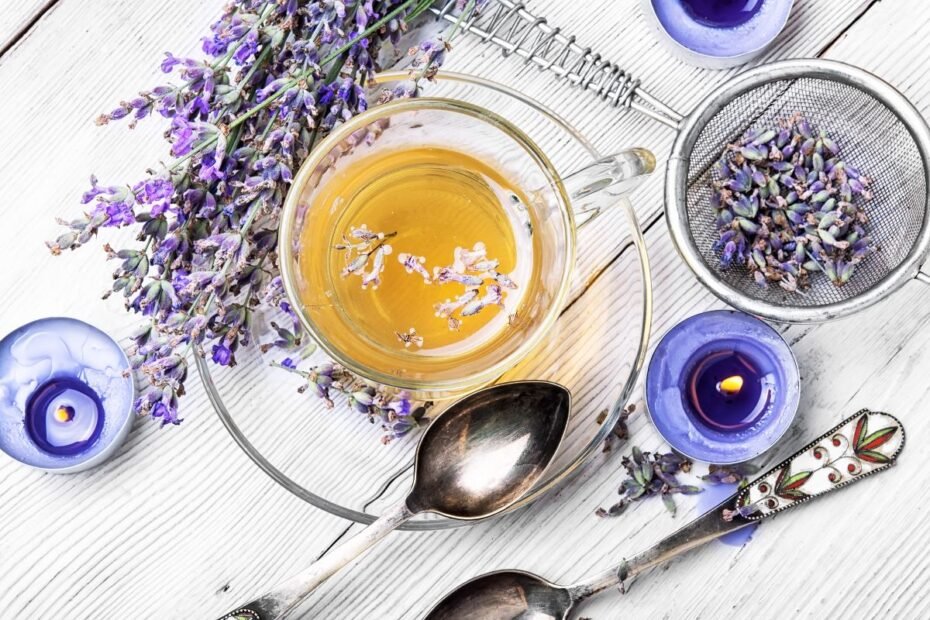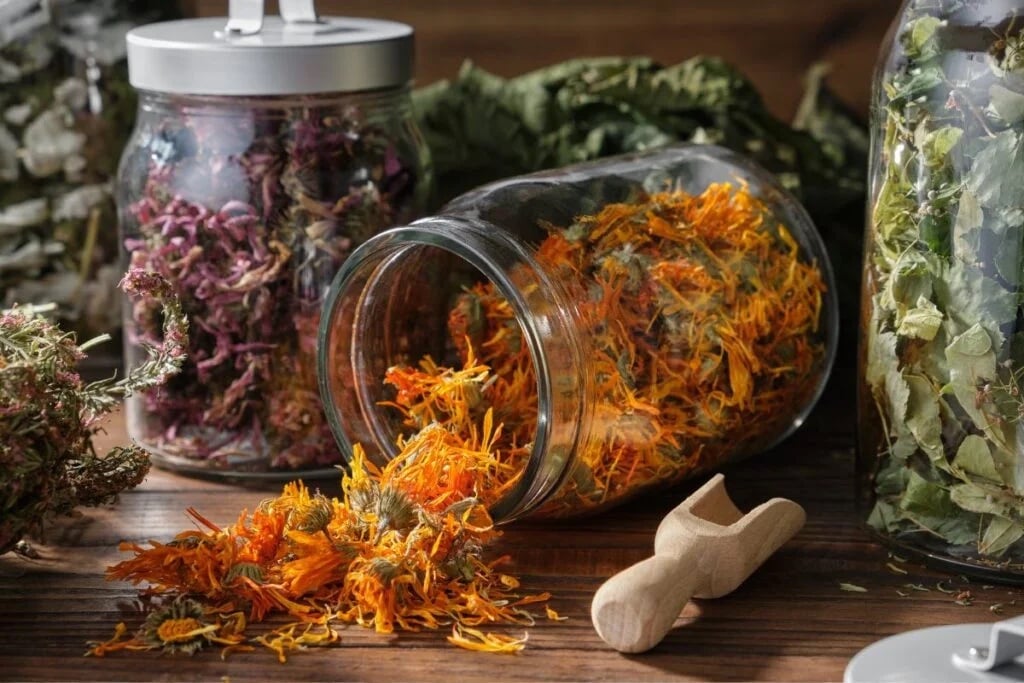Lavender represents what we call perfect simplicity. Both in appearance and aroma, this plant has been delighting the eyes, calming the body, and refreshing the soul since ancient times. Lavender tea will bring inner peace and emotional refreshment. The calming, balancing effect is the main strength of lavender tea. But not only that. Lavender has a wider range of positive effects on the human body. Lavender’s beneficial properties can also complement many areas of our daily lives.
Levander: Brief Description
Lavender (Lavandula angustifolia) is a genus of the Lamiaceae plant family. It is most common in warm, sunny regions and climates in all Old World countries. Some varieties of lavender grow in colder and wetter climates. Therefore, people cultivate particular hybrids. All lavender varieties have a wonderful aroma and can be used in the diet.
Lavenders are generally small shrubs growing up to 60 cm tall. Their leaves are narrow, elongated, and covered with tiny hairs. The color of the leaves is grayish-green. Lavender flowers are soft purple, bell-shaped, and clustered at the top of the stems.
In the modern world, lavender plantations are cultivated and provide raw materials for numerous perfumeries, cosmetics, and hygiene products. The lavender business is most developed in the Provence region (south-eastern France).
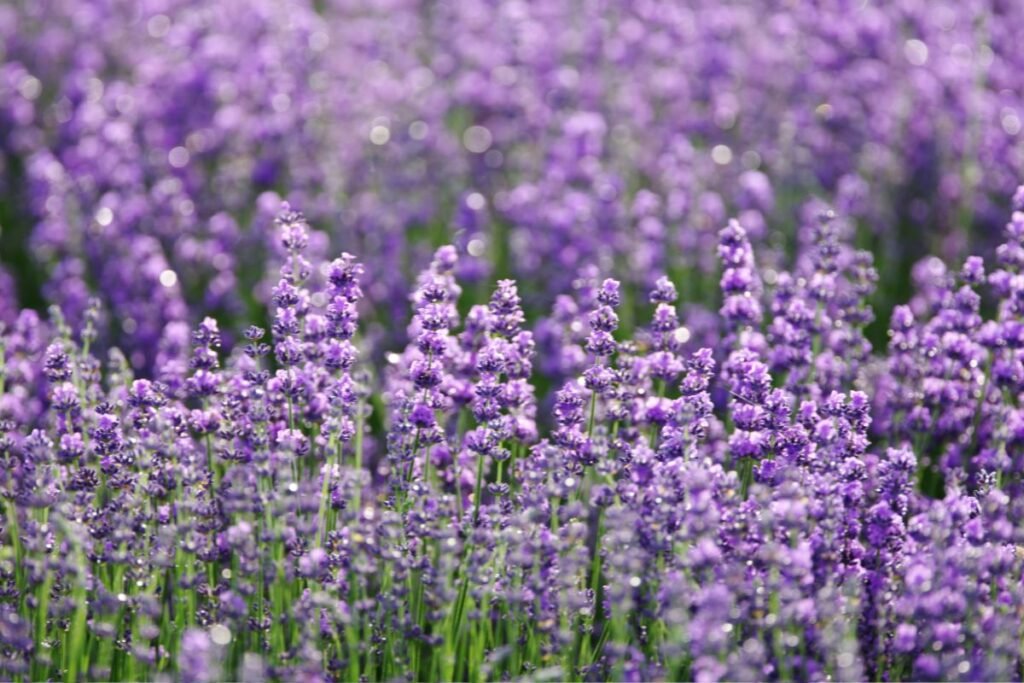
When to Harvest Lavender?
There are a multitude of purposes for lavender usage: tea, dishes, aromatic bouquets, and essential oils. Lavender flowers are the most commonly used. The quality of the raw material is required to produce efficient lavender products. Follow the advice to consider the flowering phases of the plant while selecting lavender raw material for different purposes:
- Harvest the lavender flowers for tea and dishes before they open.
- Crop the inflorescences for fragrant dried lavender bundles when the first blossoms are fully open.
- Harvest the flowers for lavender essential oil production when most flowers bloom.
- Collect the inflorescences for fresh lavender bouquets when about half the flowers bloom.
Lavender blossoms are cut with two-thirds of the stalk, leaving two leaves at the bottom of each green stalk. Avoid cutting the woody part of the plant.
Pick lavender on a sunny, dry day when the morning dew completely dries. Harvest the lavender at least 24 hours after the last rain or other moisture. Otherwise, the fungus and mold in the raw material of the lavender could appear.
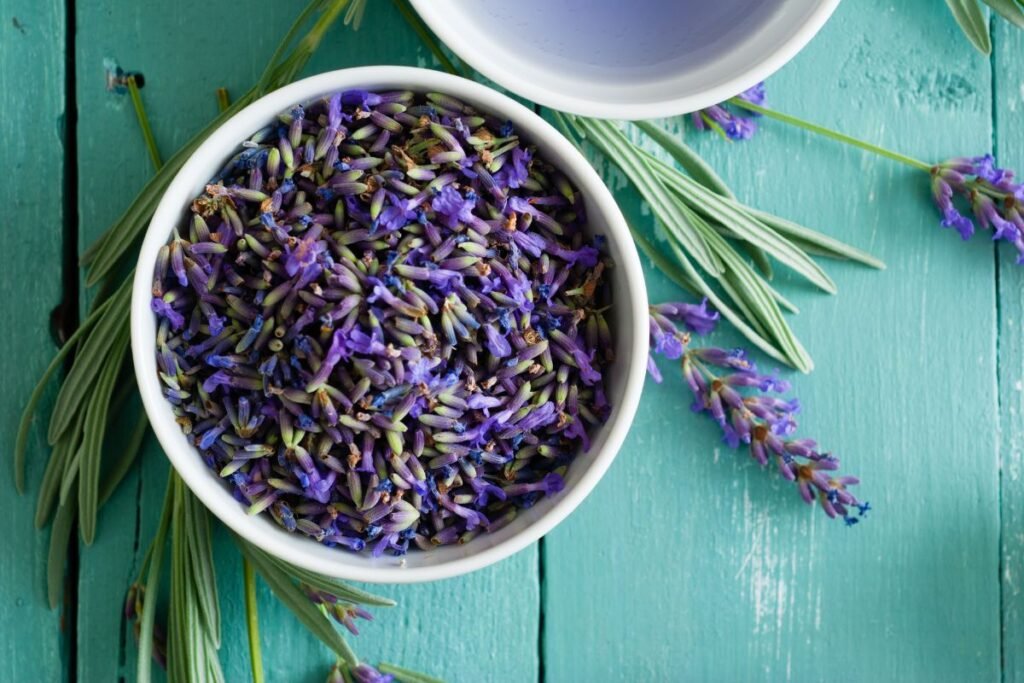
Harvesting Lavender: How to Prepare?
Tie the harvested lavender flowers in small, handful-sized bundles. You can use thread, string, or rubber bands for this purpose. Tie the lavender firmly without squeezing too tightly. Keep the split lavender out of the direct sun.
The following are recommendations for the quality drying of raw lavender:
- Lavender is best dried naturally, with the bundles (blossom side down) on a string in a dark, warm, dry, and well-ventilated room. Lavender flowers dried in this way will preserve their color and natural aroma.
- If you do not have a suitable separate room for drying lavender naturally, you can, for example, do so in a wooden cupboard with air circulation provided by a fan. Or set up shelves and dry the lavender in thin layers in a dark, dry, warm, ventilated place.
- Try to dry lavender in special food dryers. This method is faster than drying lavender naturally. However, the quality of the raw materials may not be as good as when dried naturally. Arrange the lavender in a thin layer on the trays of the dryer and dry at 37–40 °C.
- It is not recommended to dry lavender in the oven. The raw material will have lost its essential oils.
It takes about six weeks to dry the lavender naturally. The exact time depends on the drying conditions. Lavender dries completely in 24-48 hours in a food dehydrator.
The lavender stalk becomes completely brittle, breaks easily, and does not bend – the lavender is already dried.
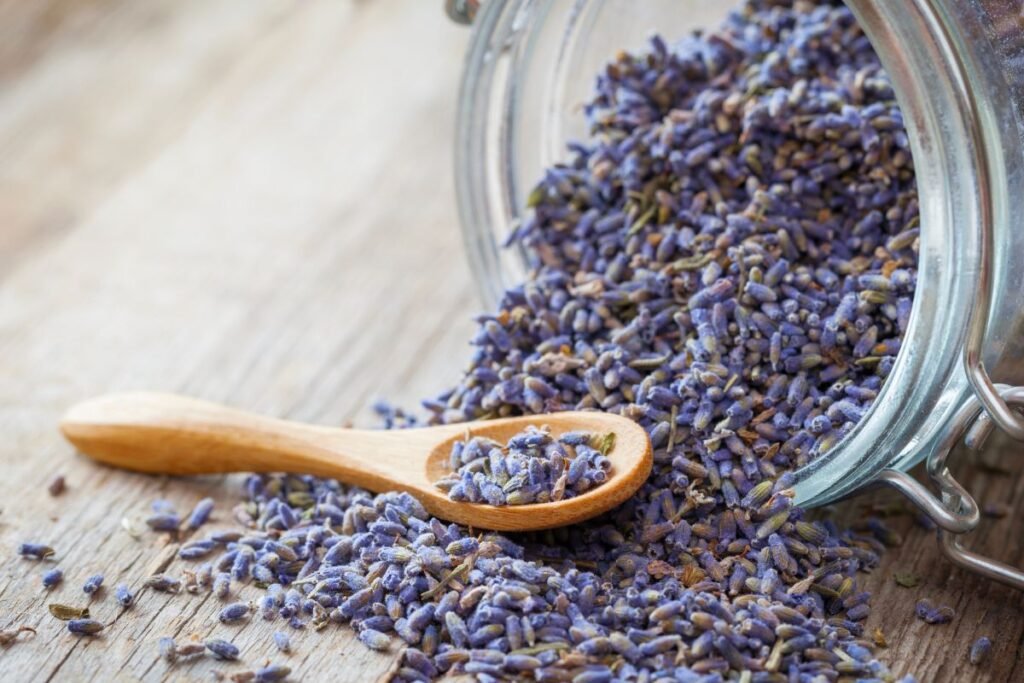
Harvesting Lavender: How to Store It?
Dried lavender flowers are used for tea or cooking by scraping off the fully shriveled lavender stems. It is best to store dried lavender flowers in an airtight glass container.
Lavender flowers purchased at the market are usually in paper bags or sealed packages. The product protection in these packages from moisture and contact with other products is an important issue. Dried lavender leaf tea is also available in supermarkets. This raw material is prepared only from the leaves of first-year lavender seedlings.
Lavender bouquets are hung in wardrobes, placed in vases, placed in storage boxes, etc.
Crushed dried lavender is placed in linen bags and used as an aromatic and insect repellent.
Benefits of Lavender Tea
Lavender is rich in vitamins C and A, calcium, amino acids, essential oils, and tannins. All these natural chemical compounds are beneficial for overall human health.
Lavender preparations such as tea, essential oil, etc., are used for medicinal purposes, such as to treat insomnia, depression, headaches, and muscle aches. These flowers also help in the treatment of many other ailments and in balancing the body.
Lavender tea (including baths) soothes and relaxes muscle spasms.
The lavender drink helps with nervousness, anxiety, and related heart palpitations. Studies show that compounds in lavender can stimulate particular areas of the brain, promoting a calming effect and lifting mood.
Lavender tea helps fight insomnia. According to many scientific studies, lavender tea helps to calm the brain and stimulates the production of dopamine, reducing the production of the stress hormone cortisol. One such study showed that lavender increases the deep sleep phase.
Lavender tea can help with digestive problems like diarrhea, nausea, and stomach cramps. Lavender’s anti-inflammatory properties help to soothe irritated stomach muscles that cause stomach pain. Lavender tea also reduces gas and bloating. The scent of lavender stimulates the production of bile, which helps the body break down food more efficiently.
Lavender tea is rich in antioxidants and antibacterial compounds, which strengthen the body’s overall resistance to the adverse effects of the environment and help protect against colds, inflammation, and bacterial and viral infections.
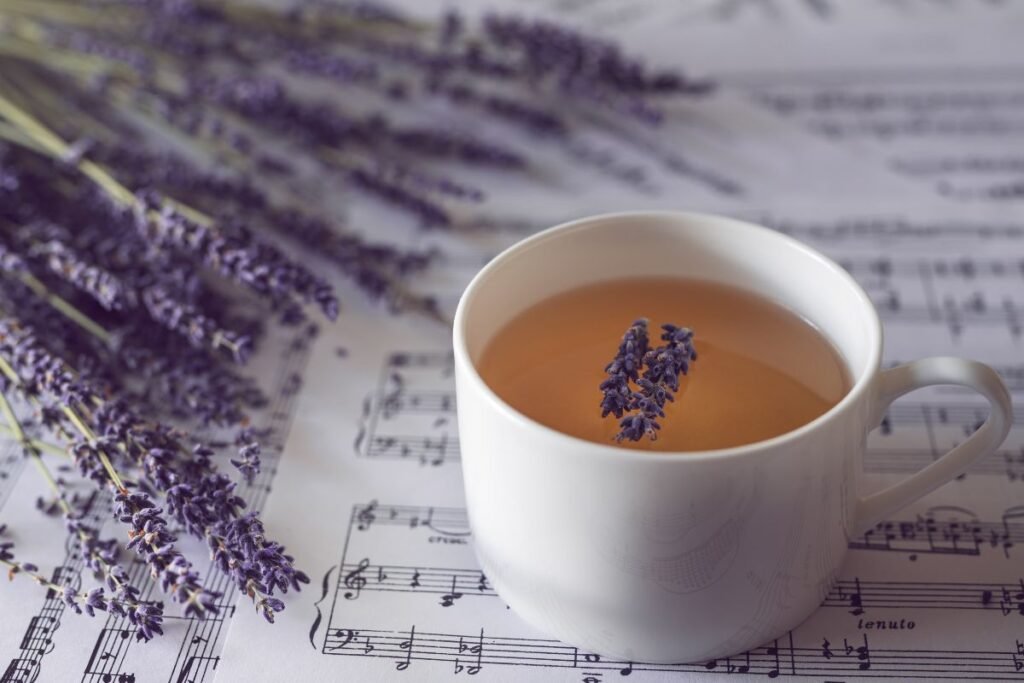
How to Make Lavender Tea?
You can make lavender tea from fresh flowers just picked from the garden or dried. If you choose to make a drink from fresh flowers, you need more raw material to make a concentrated tea. Make the tea from lavender flowers alone or combined with other herbs such as caraway, mint, lemon balm, thyme, sage, etc.
Lavender tea has a delicate flavor and aroma. It is suitable for spicy dishes, which you can enjoy after a tiring or stressful day. Drink the lavender tea hot as well as cold with ice.
Prepare lavender tea like other herbal teas and steep the raw material in hot water.
To prepare the lavender tea, you will need:
- one heaped teaspoon of dried lavender flowers or two heaped teaspoons of fresh lavender flowers,
- 200 ml of water.
Add the lavender raw material to a tea infuser (or cup) and fill it with boiling water. Leave the container covered for 10 minutes. The soothing and mood-lifting tea is ready, and enjoy!
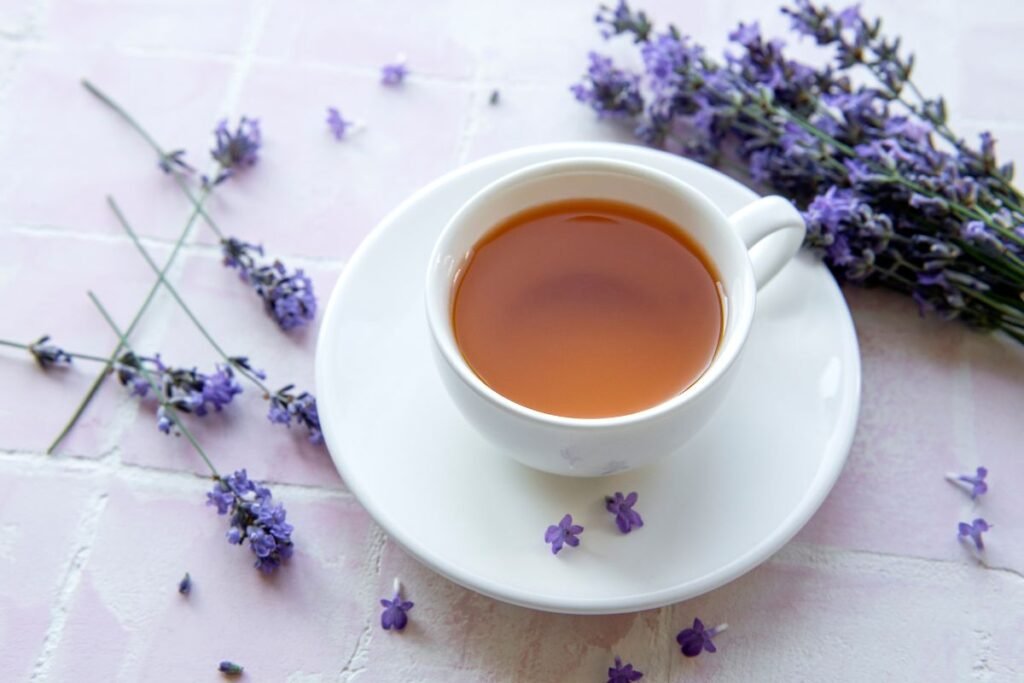
Lavender and Chamomile Tea for a Good Night’s Sleep
This herbal tea is perfect for a restful night’s sleep. Like lavender, chamomile tea has calming properties that help you relax and sleep peacefully.
Make the tea from fresh or dried lavender and chamomile flowers.
Use one teaspoon each of lavender and chamomile for 1 cup of tea. Cover the raw material with boiling water and soak for 10 minutes. Strain it before drinking.
Lavender and Mint Tea
This combination of herbs has a refreshing, mildly tonic effect. This tea is suitable for drinking cold to refresh on a hot summer day.
Prepare this tea in a medium-sized pot. For the tea, you will need:
- ¼ cup dried or fresh lavender flowers,
- 1 cup fresh or dried mint leaves,
- 300 ml water.
Place the lavender flowers and mint leaves in a saucepan, pour in water, and bring to a boil. Reduce the heat to medium and boil for 5–10 minutes. It is best to keep tasting the tea as it boils. Stop it you have reached the desired taste. Strain the tea and drink it warm, or pour it into a glass with ice and enjoy it cold.

Lavender in The Diet: Beautiful, Tasty, and Useful
Use lavender flowers in various stews, fish and meat dishes, sauces, soups, and desserts. Lavender adds a delicate floral flavor to dishes.
People use lavender, one of the most popular edible plants, to decorate dishes and desserts. They help to create a subtle aesthetic in food.
Lavender flowers, St. John’s wort, oregano, basil, rosemary, sage, thyme, fennel, and dashi make up the renowned Provence spice blend.
Lavender Tea for a Woman’s Well-being
During difficult periods in a woman’s life, lavender tea can help improve well-being and quality of life when hormones are out of balance.
Studies conducted in 2016 showed that regular drinking of lavender tea and lavender aromatherapy two times daily for 20 minutes can help manage menopausal hot flashes and sweating.
Due to its calming and relaxing effect, lavender tea can help relieve cramping and menstrual pain.
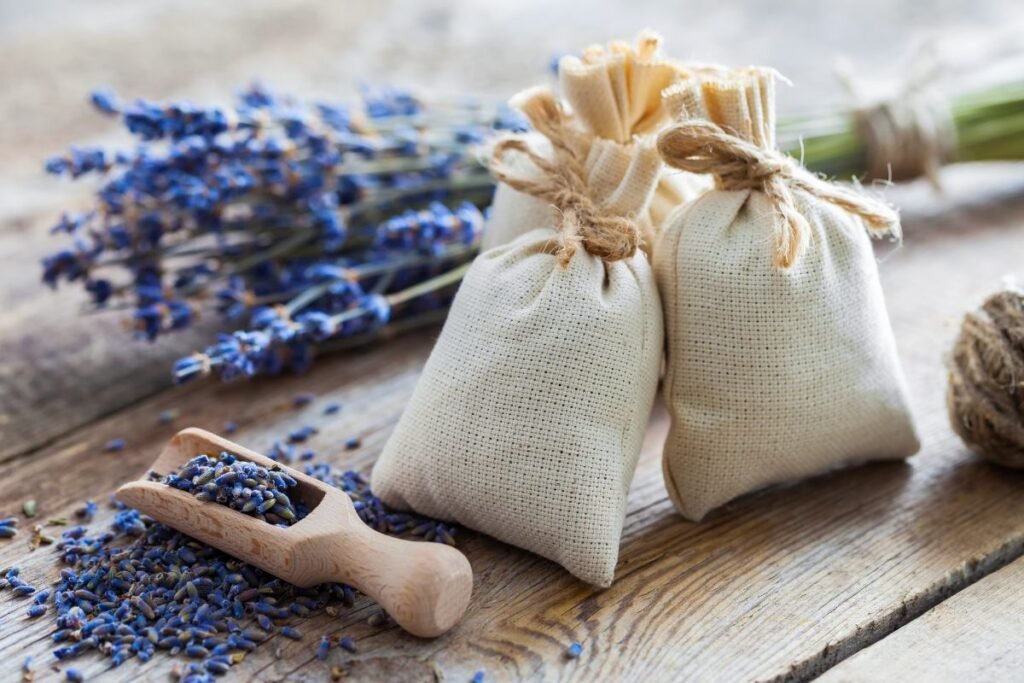
Side Effects of Lavender Tea
There is very little data on the side effects of lavender tea. This tea is considered safe for consumption. However, like any other tea, it can provoke undesirable effects in certain people and situations.
People allergic to lavender or other plants may experience allergic reactions like difficulty breathing, skin rashes, and throat irritation.
Pregnant or breastfeeding women should avoid lavender tea, as there is insufficient data on the safety of the tea during pregnancy or lactation.
Boys should restrict their use of lavender tea during puberty. Studies have shown that lavender preparations may cause gynecomastia, i.e., enlargement of the breast tissue, in immature boys. This condition disappears when they stop to drink lavender tea.
Lavender for Many Occasions
Here are some ideas for using dried lavender:
- A gauze, linen, etc. bag for your chest of drawers, closet, bathroom, etc.
- Ingredients for handmade soap, salve, cream, body scrub, etc.
- Raw material for lavender essential oil and natural perfume.
- Natural repellent to repel mosquitoes, flies, moths, etc.
- To prepare or improve foodstuffs such as syrup, kombucha, lavender sugar, etc.
- To eliminate the smell of poultry houses, disinfect to repel insects, and sprinkle dried lavender on poultry roosts.
- It acts as an organic fertilizer, repels insects, and gives a pleasant aroma to mulching potty soil.
Sources:
https://www.kosmetikosdnr.lt/ingredient/lavandula-angustifolia-oil
https://www.everydayhealth.com/diet/what-are-possible-benefits-lavender
https://www.healthline.com/health/healthy-sleep/how-to-make-lavender-tea
https://senchateabar.com/blogs/blog/lavender-tea
https://senchateabar.com/blogs/blog/how-to-make-lavender-tea
Associative photos © Canva.
